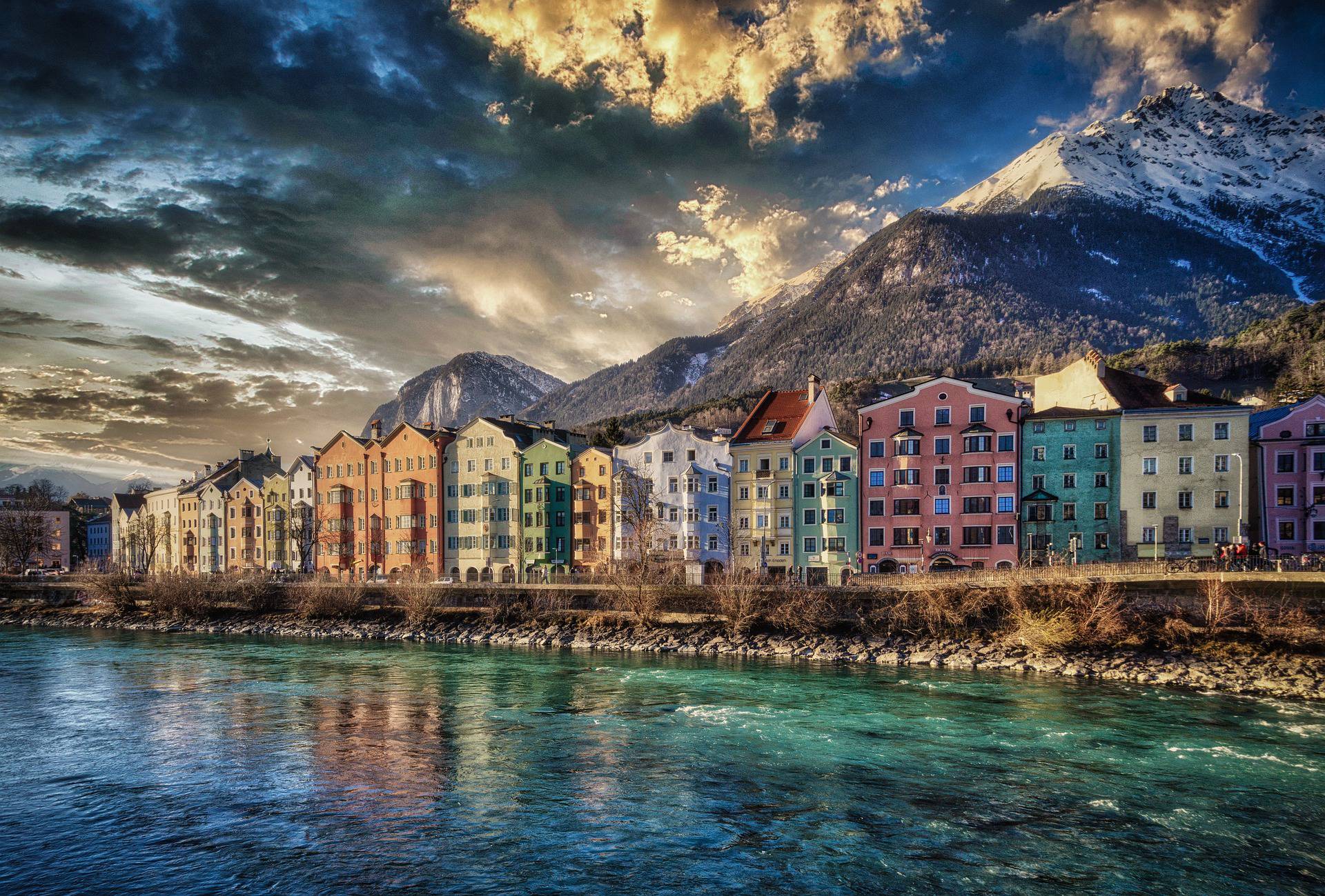Austria, which borders Germany, Switzerland, and Italy, frequently goes unappreciated. One of its most endearing characteristics is that it is smack right there in the middle of Central Europe. In the past, this has made it a land of great strategic value and an eventful history, acting as it does as a gateway to either side of Europe. It has also experienced some significant earthquake activity, which has enabled the creation of some of the continent's most stunning landscapes.
The beauty is revealed as numerous statues, from the modest to the extravagant, and enormously huge buildings alternate between red and white. Vienna's Museum Quarter, a tangle of magnificent Baroque and Art Nouveau buildings that handily challenges Paris for the title of Europe's most opulent city, is the epicenter of the city's overt opulence. As one of the most magnificent towns in Europe, the palaces here add an ornate and ancient grandeur to this location.
Most people agree that Austria is the center of European classical music. Given that renowned composers who were born or resided in the nation throughout the ages have left their mark on its streets, it is easy to claim it's musical inclination. The Vienna State Opera is the most intriguing of the several structures in the country's capital that are devoted to its primary artistic culture.
The elegance of the capital will give way to the splendor of the country's endlessly rolling hills and the glistening bodies of water that lie at their feet wherever you go through its picturesque western and southern regions. The Lake District of Austria is a wonder best discovered on two wheels since lovely bicycle paths cling to the shorelines of many of the lakes, or views as they are known here. Many opportunities abound for cruising above or diving below their distinct blue colors.
Austria has a reputation for having harsh peaks due to being the birthplace of some of history's most cool mountaineers and snow sports enthusiasts. Although there are no compromises in terms of the natural beauty, the current shift in popularity of snowsports destinations from France and Italy to Austria has been mostly driven by cost. The Austrian Central Alps offer views of quaint villages on lush hills scattered with bell-adorned cows, with soaring, snow-capped peaks rising behind. They are probably the epitome of Austria as it is known to the world.
The earliest origins of Austria date way back to the Iron Age when it was first organized as the Celtic Kingdom in 800 BC. The Romans after the 1st Century BC conquered the lands to the Danube and named it Noricum. In the 6th century AD, German tribesmen occupied the lands until they fell to Frankish Empire.
In the 10th century AD, the Magyars' attempts to conquer Austria were quashed by German King Otto I. The Magyars are now known to be as ancestors of Hungarians. In 1156 AD, Austria was annexed to the Roman Empire and prospered greatly.
Later in 1273 AD, Rudolf von Habsburg became the Roman Emperor and defeated the King Ottokar of Bohemia who was the duke of Austria since 1246. Since then the Habsburgs continued their rule on Austria for centuries.
In 1806, Emperor Francis II established Austrian Empire after Roman Empire was adjourned. In 1867, the dual monarchy, Austro-Hungarian rule was established that continued till World War I when the empire fell and the country that we know today was established.
A. The top tourist attractions in Austria in 2023 are:
A. The best time to visit Austria is May to September
A. Austria's official currency is Euro.
A. The prettiest town in Austria is Hallstatt. It is set by Hallstatt Lake and flanked by the mountainous Salzkammergut region.
A. Austria needs 7 - 8 days to fully explore the attractions of Austria.
A. Austria has well-developed public transport that is affordable as well.
The cities are connected by trains, buses, and flights
For local commutation, subway, local trains, trams, and buses are available.
Rental car facilities are also available.
 Best time to visit
Best time to visit Language Spoken
Language Spoken Weather
Weather